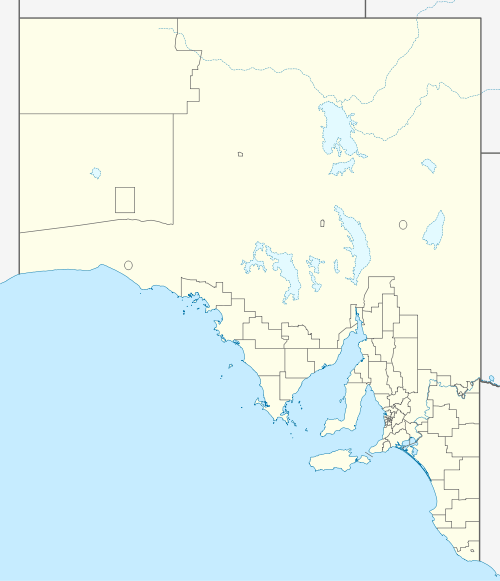East Warburton Basin
The East Warburton Basin in South Australia is the site of a hypothesised large impact crater of the Carboniferous period (around 360-300 million years ago). The subterranean structure lies buried at a depth of ~4 km, and measures a minimum of 200 km in diameter.[1] For comparison, the Chicxulub crater is about 180 km in diameter. The East Warburton crater is adjacent to the West Warburton crater, which is also around 200 km in diameter. Combined, they make up the largest known impact zone on Earth, but individually, are smaller than the two biggest known impact craters in the world — the Sudbury crater in Ontario, thought to be caused by a comet impact which led to the creation of a crater estimated to have been 250 kilometres across originally; and the largest in the world, the 300 km wide Vredefort crater in South Africa. The Warburton craters formed when an asteroid or comet, on a collision course with Earth, split into two main pieces and impacted the Australian continent,[2][3] then part of the Gondwanan supercontinent.
 Location of impact structure in South Australia | |
| Impact crater/structure | |
|---|---|
| Confidence | Potential |
| Diameter | Approximately 200 kilometres (120 mi) |
| Age | 360-300 Ma |
| Exposed | No |
| Drilled | Yes |
| Location | |
| Location | South Australia |
| Coordinates | 27°12′45.79″S 139°40′04.39″E |
| Country | |
| State | South Australia |
Scientists proposed the impact formation through analysis of shocked quartz grains from the area after a circular anomaly appeared in seismic tomography studies of the region.[4]
References
- Vast asteroid impact zone found in Australia AFP/Google News, 19 February 2013. Retrieved 15 May 2013.
- Glikson, Andrew. "World's largest asteroid impact site could be right here in Australia". The Conversation. Retrieved 1 November 2019.
- "Giant Asteroid Impact Scars Discovered in the Warburton Basin". Encyclopedia Britannica. Retrieved 1 November 2019.
- Geophysical anomalies and quartz microstructures, Eastern Warburton Basin, North-east South Australia: Tectonic or impact shock metamorphic origin? Tectonophysics Vol. 589, 18 March 2013, Pp. 57–76. Retrieved 15 May 2013.